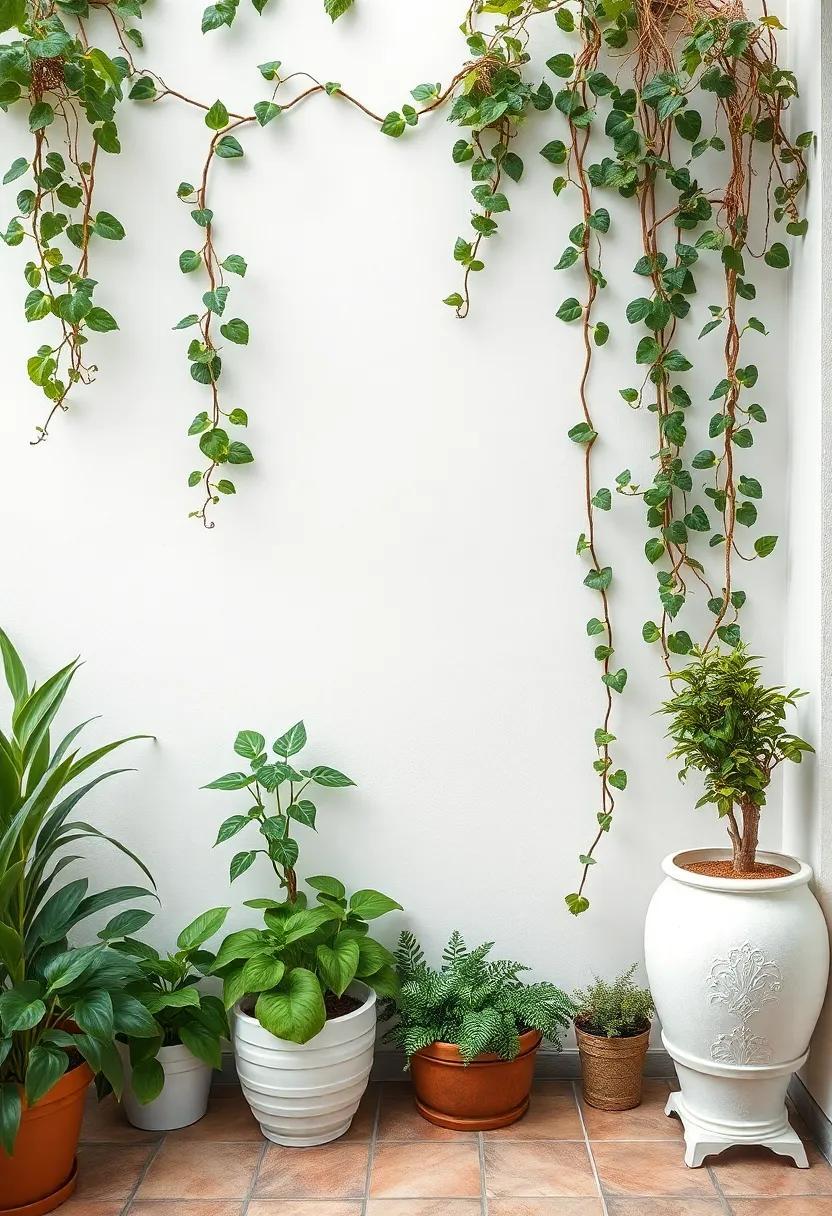As the warm sun bathes your outdoor space and the gentle breeze whispers through the leaves, ther’s nothing quite like the feeling of an inviting patio. A well-decorated patio offers a sanctuary for relaxation and outdoor gatherings, but what if you could elevate that experience even further? Enter climbing vines—nature’s elegant climbers that can transform a simple patio into a lush, green retreat. Beyond their aesthetic appeal, these plants add privacy, shade, and even a touch of biodiversity to your outdoor haven. In this article, we’ll explore a variety of climbing vines suitable for patios, guiding you through the selection process to help you choose the perfect Botanical partners for your outdoor oasis. Whether you desire the fragrant blooms of flowering vines or the rich foliage of evergreen varieties, let’s embark on a journey to discover how these climbing plants can enhance your patio experience.
Lush Greenery: The Allure of Climbing Vines in Your outdoor Space
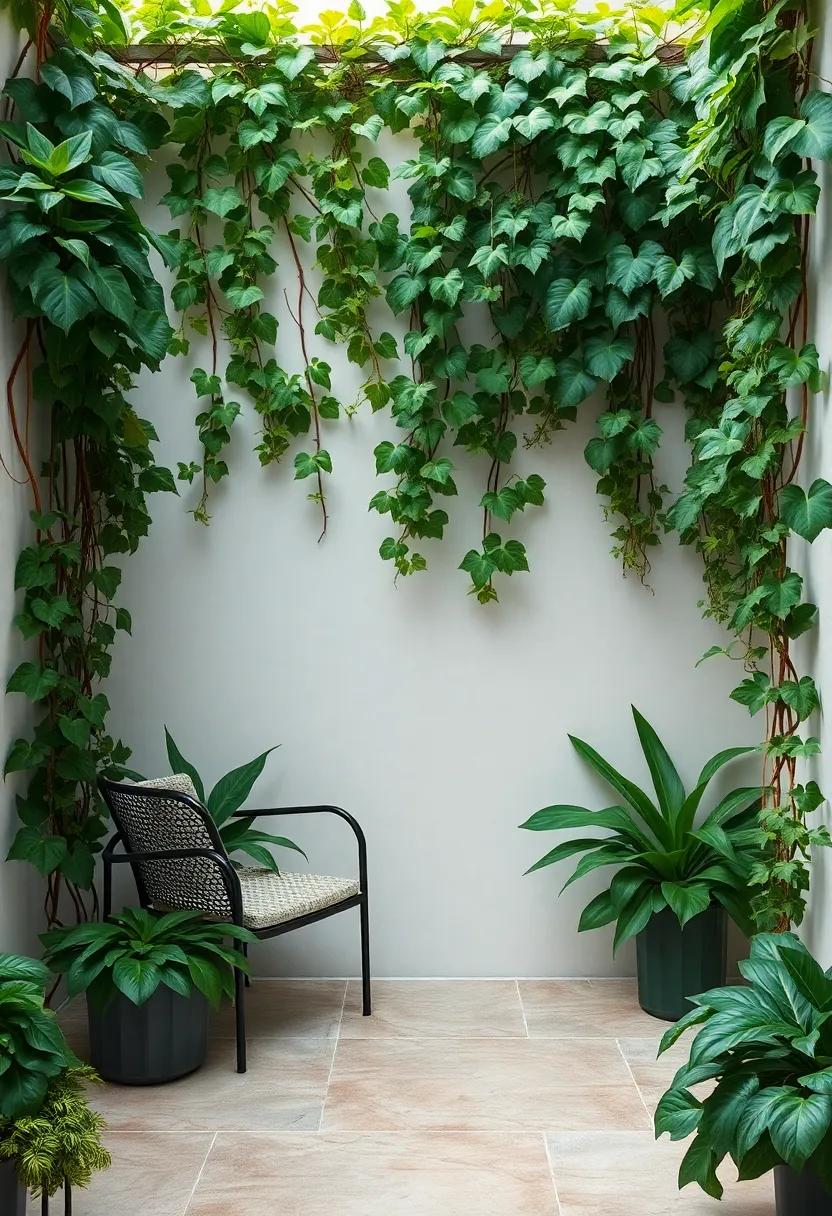
Imagine sipping your morning coffee while enveloped in a tranquil oasis created by the natural beauty of climbing vines. These vibrant green plants can transform any outdoor space into a lush retreat, offering both visual appeal and practicality. With their ability to thrive on trellises,walls,and fences,climbing vines not only add height and dimension but also create intimate areas for relaxation.Opt for species such as Wisteria for its stunning cascading blooms, or Honeysuckle for its sweet fragrance that attracts pollinators.
Incorporating climbing vines into your patio design not only enhances aesthetics but also provides benefits like added shade and privacy. Consider using a mix of perennial and annual vines for varying textures and colors throughout the seasons. HereS a rapid guide on some popular climbing vines to consider:
| Vine name | Features | Ideal Conditions |
|---|---|---|
| Clematis | Large, showy flowers in various colors | Full sun to partial shade |
| Climbing rose | Romantic blooms, attracts butterflies | Full sun |
| Virginia creeper | Fast-growing, vibrant fall colors | Full sun to partial shade |
Whether you choose classic varieties or exotic options, the charm of climbing vines can elevate your outdoor living experience. Their ability to cover unsightly structures, soften hard edges, and add life to any setting makes them a perfect choice for modern patios. Start your green adventure today and watch your space blossom into a lovely sanctuary.
Choosing the Right Vining Plants for Your Patio Environment
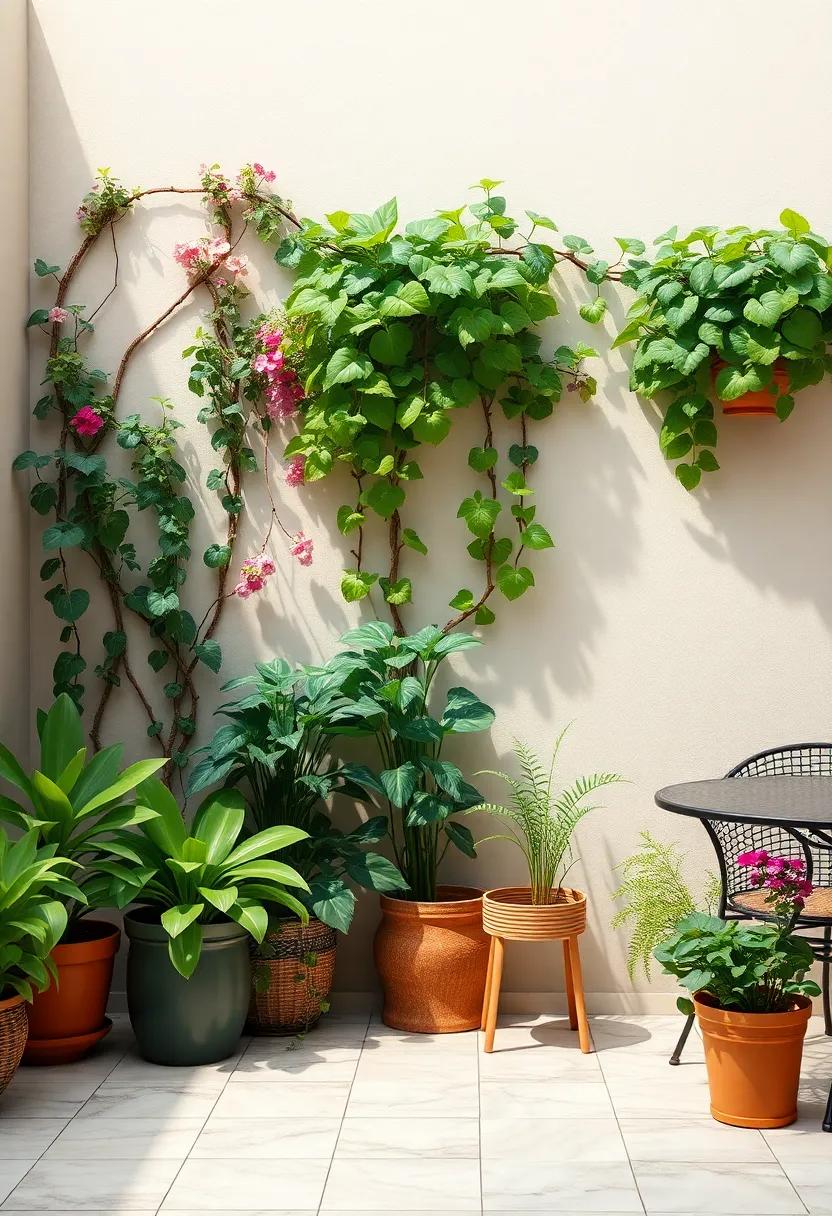
When selecting vining plants for your patio, it’s essential to consider light exposure, climate compatibility, and the amount of space available. If your patio receives a lot of sunlight, you can opt for sun-loving climbers such as Morning Glory or Scarlet runner Beans. For shadier areas, Clematis and Honeysuckle thrive, bringing color and fragrance. Moreover, consider the temperature of your locale; some vines, like Passionflower, prefer warmer climates, while others, such as Ivy, can handle cooler temperatures with ease.
Its meaningful to match the growth habit of the vines with your intended support structure. Here are some popular options for different types of supports:
| Vining Plant | Ideal support |
|---|---|
| Jasmine | Trellises or Arbors |
| Grapevine | fences or Pergolas |
| Sweet Pea | Wire Mesh or Stakes |
| Black-eyed Susan Vine | Containers or Hanging Baskets |
Additionally, consider the aesthetic impact of the plants; bold, lush foliage and vibrant flowers can enhance your patio’s charm while providing privacy and shade. Always ensure that the chosen vine aligns with your garden style, whether it be casual and whimsical or formal and structured. With these factors in mind, you can curate a stunning vertical garden that elevates your outdoor experience.
Exploring the Diversity of Climbing Vines for Different Climates
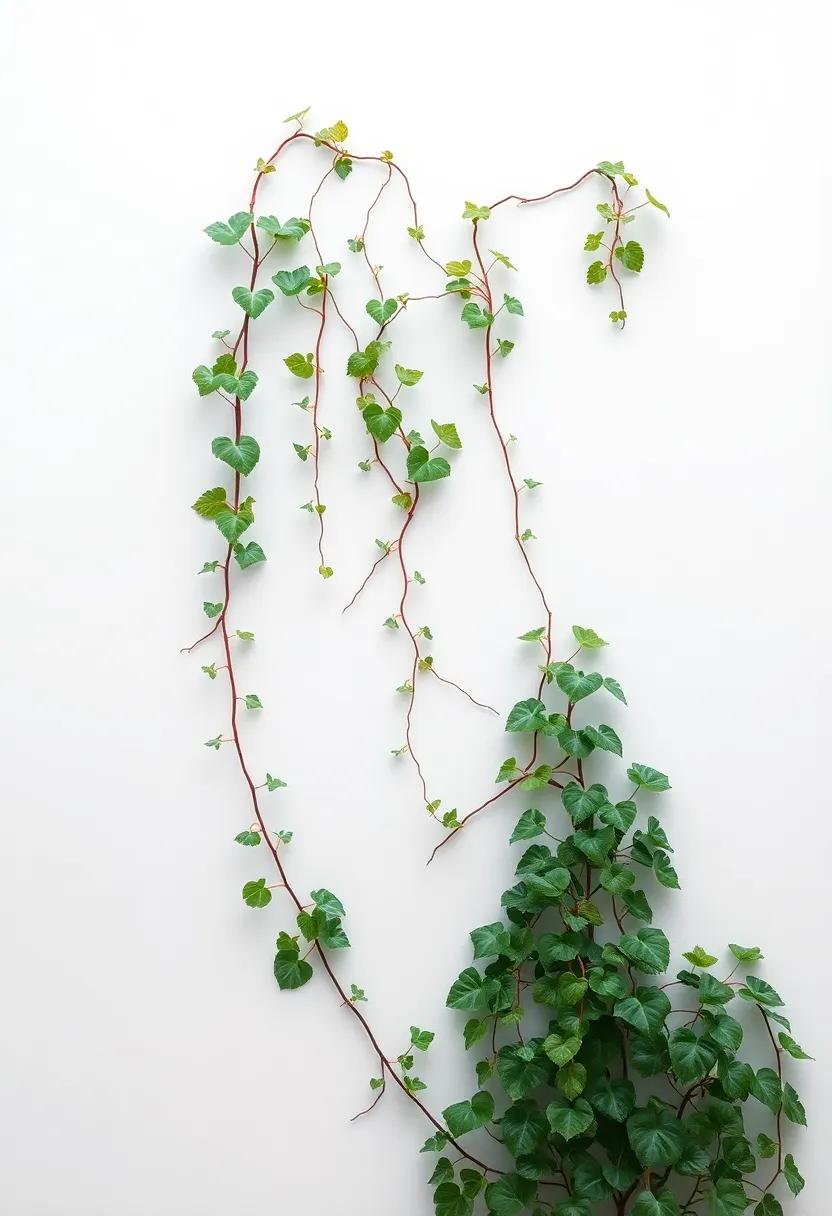
when selecting climbing vines for your patio, it’s essential to consider the climatic conditions of your region.For warm, temperate climates, popular choices include:
- Bougainvillea – Known for its vibrant bracts, it thrives in sunny environments.
- Passion Flower – This exotic vine not only produces striking flowers but also offers edible fruit.
- Jasmine – Renowned for its sweet fragrance, jasmine can create a romantic atmosphere for your outdoor space.
In contrast,cooler climates offer unique opportunities for climbing vines that can withstand frost. Consider these hardy selections:
- Clematis – With many varieties,clematis provides a stunning display of blooms that can enhance any patio.
- honeysuckle – This vine attracts pollinators and offers fragrant blooms, thriving even in cold temperatures.
- European Ivy – A resilient plant that adds greenery year-round, ivy is perfect for draping over trellises or walls.
Understanding how various climbing vines adapt to different climates empowers patio enthusiasts to make informed selections. To aid your decision, here’s a helpful table comparing common climbing vines based on their preferred conditions and growth habits:
| Plant Name | Climate Preference | Growth Habit |
|---|---|---|
| Bougainvillea | Warm, arid | Fast-growing, sprawling |
| Passion Flower | Tropical, warm | Vigorous climber |
| Clematis | Temperate | Varied growth rates |
| Honeysuckle | Cool to temperate | Fast-growing, twining |
Colorful Blooms: The Most Striking Flowering Climbing Vines
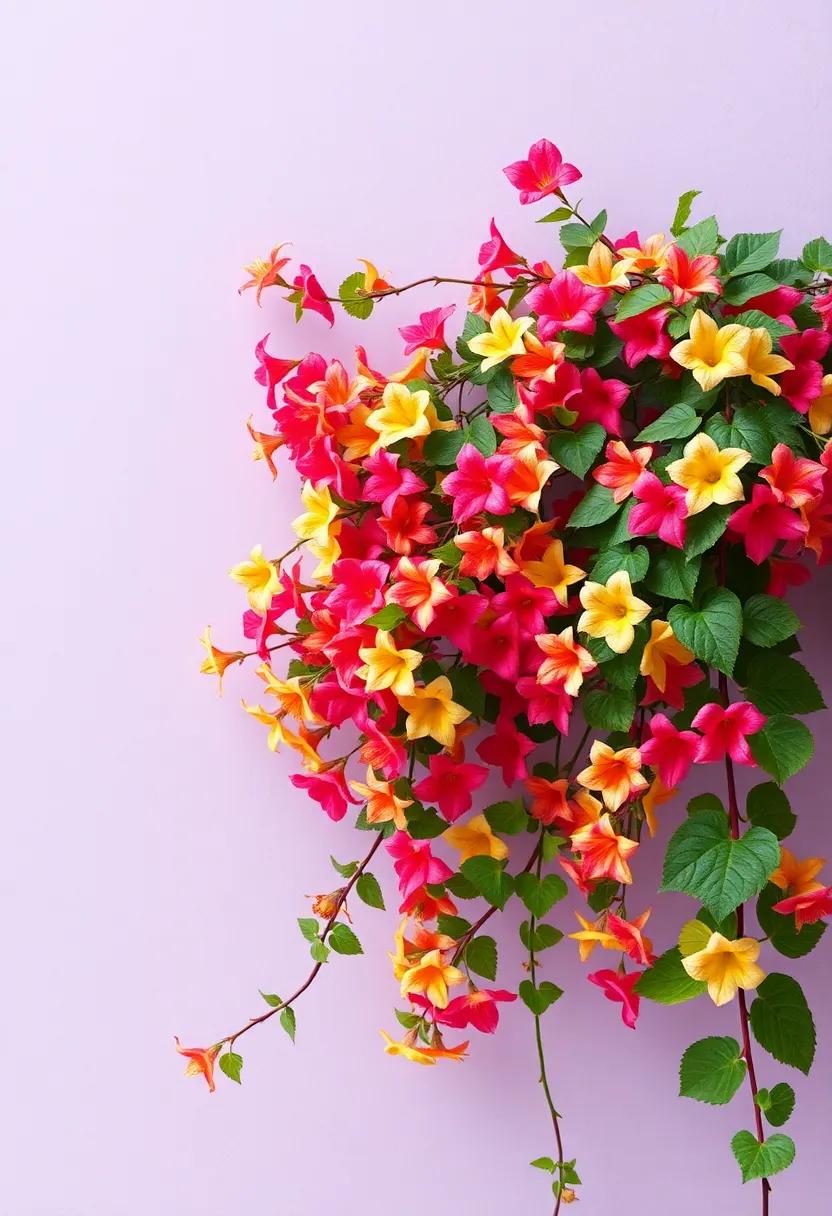
for a vibrant splash of color and an enchanting atmosphere, several flowering climbing vines can transform your patio into a floral paradise. Among the most popular choices are:
- Wisteria: Known for its stunning cascading blooms that resemble purple waterfalls, wisteria can create a breathtaking focal point while climbing trellises or pergolas.
- Honeysuckle: With its sweet fragrance and a variety of color options, honeysuckle attracts hummingbirds and can brighten your outdoor space.
- Clematis: This versatile vine comes in different shapes and colors, offering an array of choices from deep purples to radiant whites, making it a beloved choice for gardeners.
- Passionflower: Its unique and intricate blooms add an exotic touch, while its climbing habit ensures it thrives in vertical spaces.
Adding these vibrant plants not only enhances the aesthetic appeal but also introduces a lively atmosphere to any patio. To help you determine the best options based on your climate and preferences, consider the following table:
| Flowering Vine | Bloom colors | Best Climate |
|---|---|---|
| Wisteria | Purple, Blue, White | Temperate |
| Honeysuckle | Yellow, Red, Pink | Warm, Mild |
| Clematis | White, Pink, Purple | Varied |
| Passionflower | purple, Pink | Tropical, Subtropical |
Luxurious Foliage: Leafy Climbers That Transform Your Patio
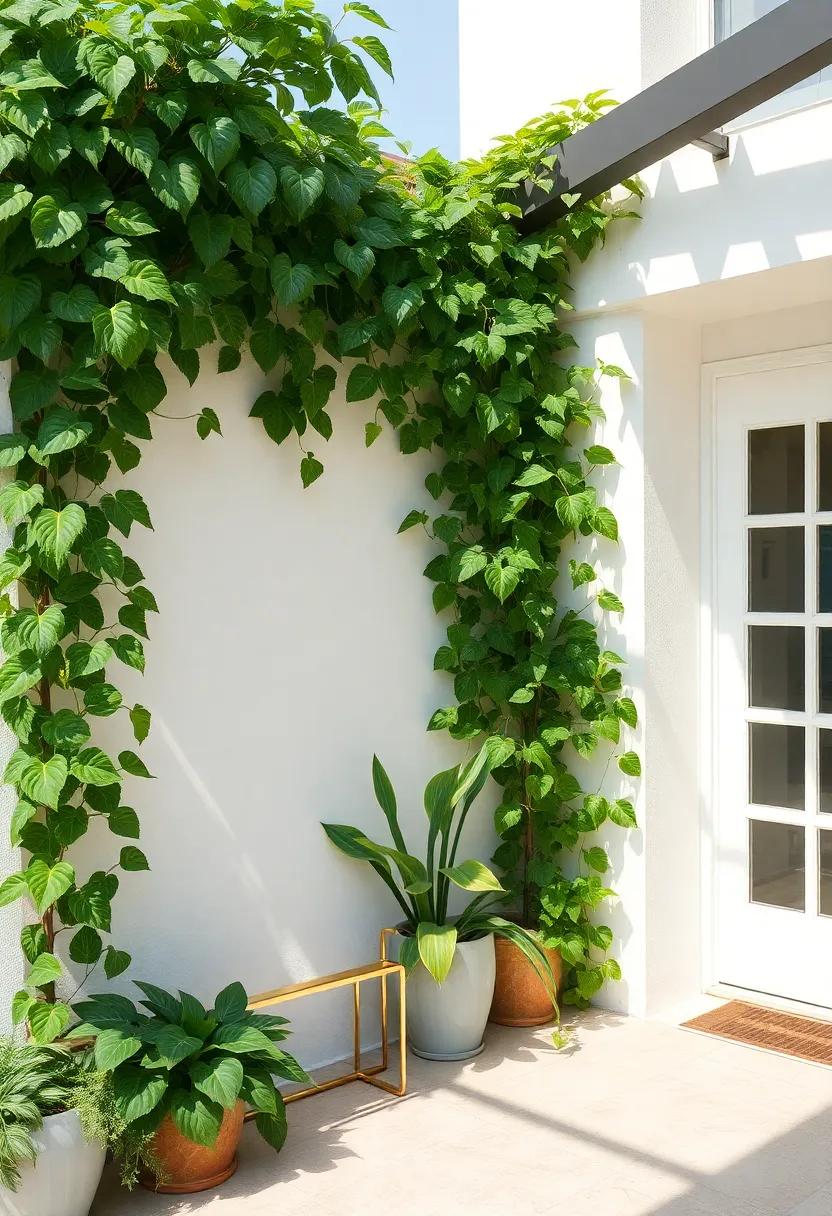
Transform your patio into a lush oasis with the enchanting beauty of climbing vines. These leafy climbers not only add verdant splendor but also create a sense of privacy and intimacy to your outdoor space. Some popular choices to consider include:
- Star Jasmine: Known for its fragrant white blooms, it offers a dense green cover and is perfect for trellises or pergolas.
- Red Runner Bean: This edible plant boasts vibrant red flowers and lush foliage, making it a delightful addition to your garden.
- Ivy: A classic choice, ivy provides a timeless look and an ability to thrive in various light conditions.
To enhance the overall aesthetic, intertwining these climbers with hanging containers of vibrant flowers can create stunning visual dynamics. Pair them with well-placed lighting to highlight their textures and shadows in the evening.Here’s a quick glance at some climbers and their unique characteristics:
| Climber | Height | Sunlight |
|---|---|---|
| Star Jasmine | Up to 20ft | Full Sun to Partial Shade |
| Red Runner Bean | Up to 10ft | Full Sun |
| Ivy | up to 70ft | Partial to Full Shade |
Cascading Beauty: Creating Vertical Gardens with Climbing Vines
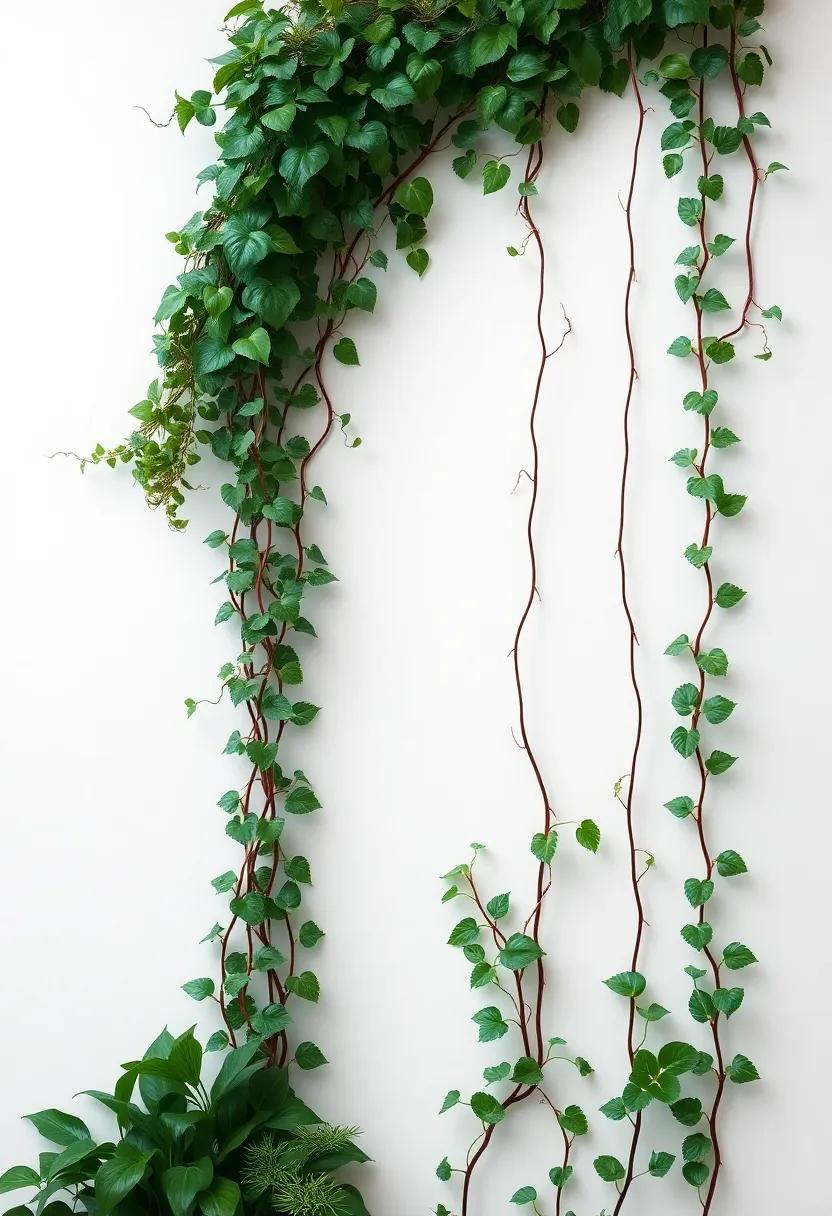
transforming your patio into a verdant retreat is a delightful journey that begins with the selection of climbing vines. These enchanting plants not only create a beautiful backdrop but also enhance the vertical space, inviting the eye to explore greenery at every level. To get started, consider vines that resonate with your local climate and aesthetic preferences. Popular choices include:
- Wisteria – Known for its cascading clusters of fragrant blooms.
- Clematis – Offers a range of colors, and is adaptable to various sunlight conditions.
- Honeysuckle – Attracts pollinators with its sweet scent and tubular flowers.
- Ivy – Versatile and hardy, perfect for creating a lush green wall.
When planning your vertical garden, consider the support structures that will help your vines thrive. Trellises,arbors,and even repurposed ladders can serve as stunning focal points while offering the support needed for climbing plants. Proper care includes ensuring adequate sunlight, regular watering, and periodic pruning to encourage healthy growth. Here’s a brief comparison of some popular support types:
| Support type | Best For | Material Options |
|---|---|---|
| Trellis | Clematis and Morning Glories | Wood, Metal |
| Arbor | Wisteria and Climbing Roses | Wood, vinyl |
| Wire Fence | Bean and Pea vines | Wire, Plastic Coated |
Crafting Trellises: Structure and Style for Your Vine Plants
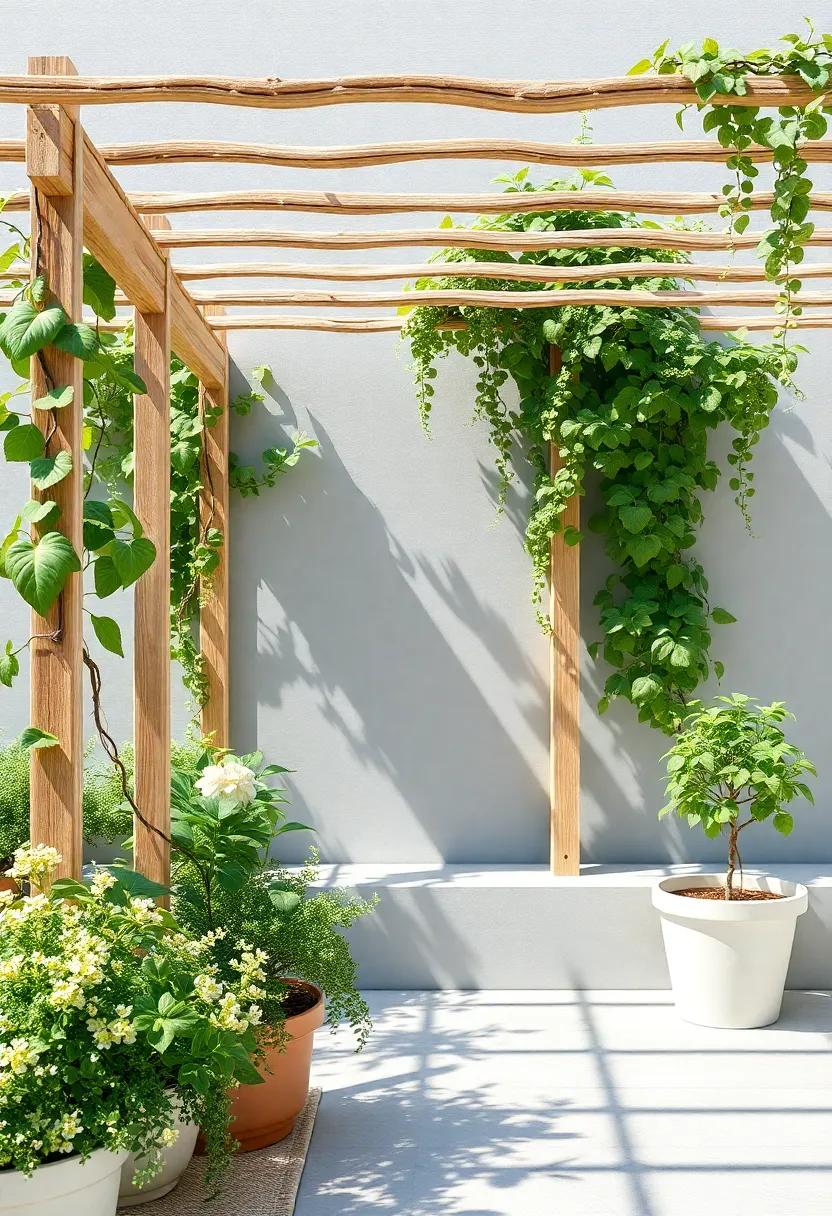
Creating the perfect trellis for your climbing vines not only provides them the necessary support but also adds a distinctive touch to your patio. When selecting materials for your trellis,consider using bold designs made of wood,metal,or even repurposed materials. Each option has its unique charm and serves different aesthetic purposes. Here are some ideas to incorporate:
- Wooden Arbors: Classic and versatile,they can be painted or stained to match your decor.
- metal Frames: sleek and modern, offering a minimalist look.
- Repurposed Fencing: A rustic and eco-friendly choice that tells a story.
In addition to the structure,consider the style of your trellis. A well-designed trellis can act as a focal point in your garden, enhancing the beauty of your patio space. Incorporate decorative elements such as:
- Curved Arches: Soften the lines and add elegance.
- Ornate Patterns: Bring artistic flair and character.
- Shelves or Planters: Utilize vertical space for showcasing more plant life.
| Material | Style | Benefit |
|---|---|---|
| Wood | Natural | Warmth and texture |
| Metal | Contemporary | Durability and strength |
| Plastic | Modern | Lightweight and easy to maintain |
Creating Shade: How Vines Can Provide Shelter on sunny Days

One of the most charming aspects of climbing vines is their ability to transform ordinary outdoor spaces into lush retreats. By skillfully training these plants to climb structures such as trellises, arbors, or even pergolas, you can create a serene and inviting shaded area that enhances your patio experience. Popular choices for this purpose include wisteria, clematis, and grapevines, each offering unique foliage and flowers that not only provide shade but also visually captivate. The shade they create can definitely help maintain a cooler temperature, making your patio a perfect spot to unwind during hot summer days.
Moreover, the benefits extend beyond just cooling comfort. Climbing vines can also play a significant role in promoting biodiversity in your garden. they serve as habitat and food sources for various wildlife, including birds, butterflies, and beneficial insects. Consider the following characteristics when choosing climbing vines for your sunny patio:
| Plant Name | Sunlight Requirements | Height | Flowering Season |
|---|---|---|---|
| Wisteria | Full Sun | Up to 30 ft | spring to Early Summer |
| Clematis | Partial to Full Sun | Up to 10 ft | Spring to Fall |
| Grapevines | Full Sun | Up to 20 ft | Summer to Fall |
By thoughtfully selecting climbing vines that not only suit your patio’s aesthetic but also thrive in your local climate, you can enjoy a multifunctional outdoor space that fosters relaxation and encourages ecological harmony. As you embrace the greenery, you’re not just beautifying your patio; you’re cultivating an environment that invites nature right into your home.
Pollinator Helpers: The Ecological Benefits of Climbing Vines
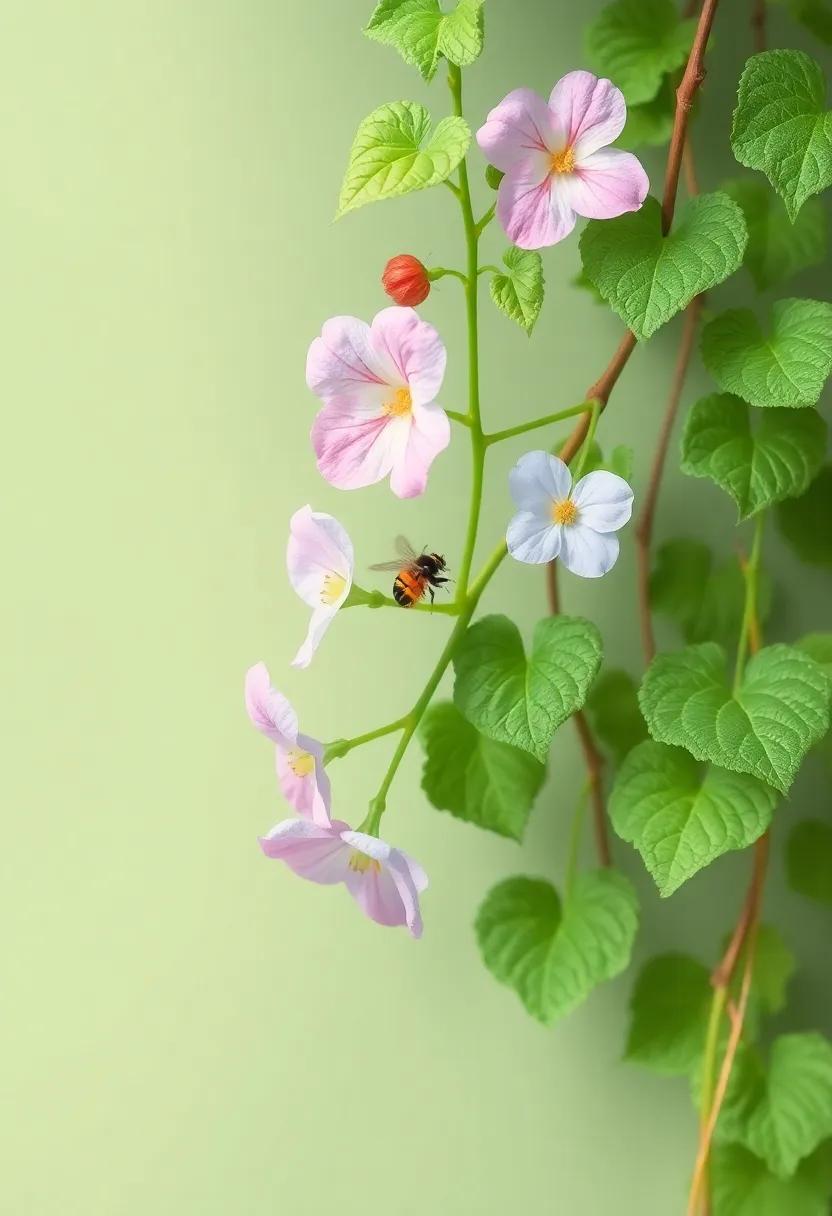
Climbing vines are not only aesthetically pleasing but also serve as vital contributors to the ecosystem, particularly in supporting pollinators. By providing a habitat and food source, these versatile plants can enhance your patio garden while inviting an array of beneficial insects. The delicate flowers of climbing vines like wisteria, bugle vine, and honeylocust attract various pollinators such as bees, butterflies, and hummingbirds, ensuring that your outdoor space thrives with life. Incorporating these plants fosters a rich biodiversity that can definitely help balance local ecosystems.
Moreover, climbing vines play an essential role in enhancing air quality and promoting soil health. They can help to stabilize soil with their root systems, reducing erosion while adding organic matter as they grow. Some climbing vines, such as Virginia creeper and clematis, can also act as natural cover to shade outdoor spaces, reducing the urban heat effect. By choosing the right species and planting them thoughtfully, you can create a lasting environment that benefits not just your patio but the wider landscape as well.
Container Gardening: Best Practices for Growing Vines in Pots
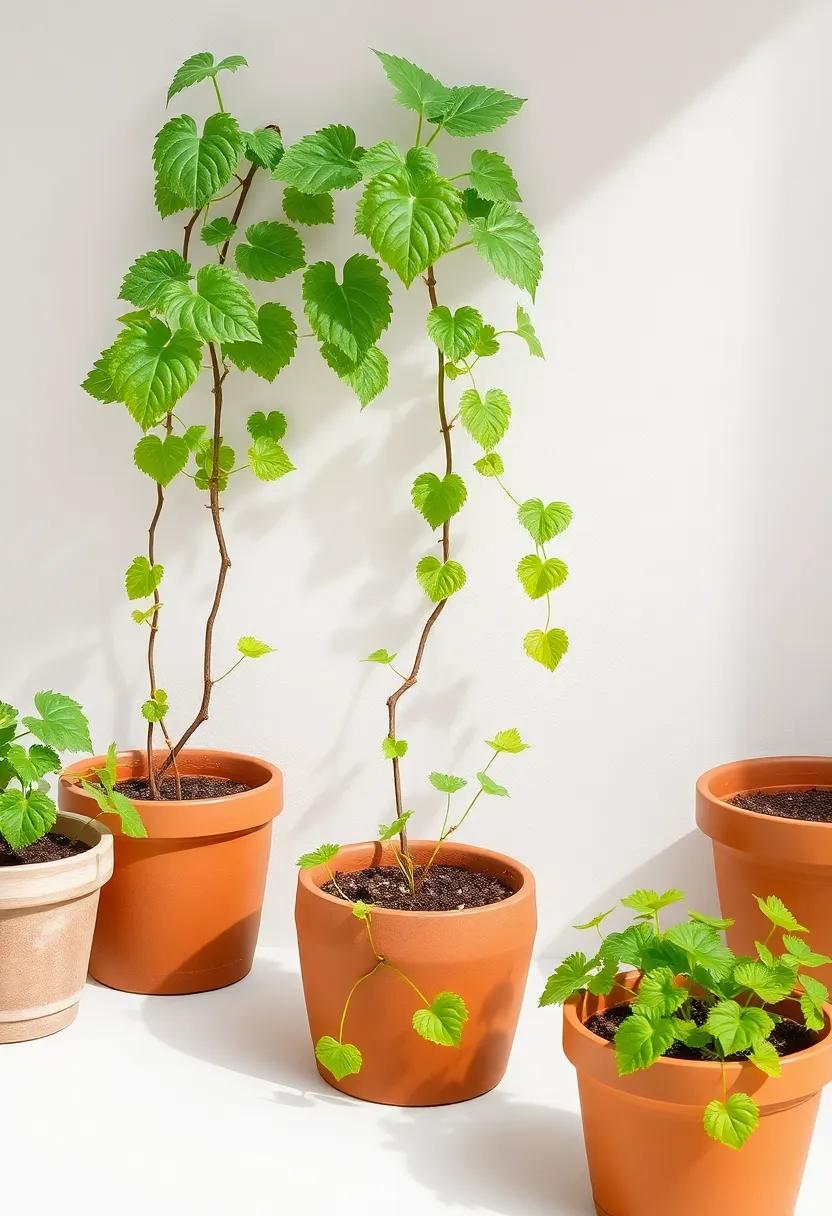
Creating a vibrant display of climbing vines in pots requires careful selection and technique to ensure healthy growth. Start by choosing the right container, as it should be quite deep and have adequate drainage holes to prevent waterlogging. Consider using materials like clay or ceramic, which offer breathability; though, ensure that plastic pots are UV resistant for longevity. Top-dress your pots with a rich potting mix fortified with organic matter to provide essential nutrients.When selecting vines,look for varieties that thrive in containers,such as:
- Sweet Peas – fragrant and colorful,perfect for trellises.
- Thunbergia (Black-eyed Susan vine) – boasts stunning orange or yellow flowers.
- Hoya – a waxy-leaved perennial known for its clusters of stars.
Once you have chosen your vines and pots, consider implementing a support system for them to climb.This could range from simple bamboo stakes to decorative trellises or even string frameworks. Remember to regularly check the needs of your vines—water when the top inch of soil feels dry and provide balanced fertilizer during the growing season. To maintain a tidy appearance, regularly prune your vines to control their size and shape while encouraging bushy growth. here’s a quick reference guide on some popular climbing vines:
| Vine Variety | Sunlight Preference | Height potential |
|---|---|---|
| Sweet peas | Full Sun | Up to 6 feet |
| Thunbergia | partial Shade | Up to 10 feet |
| hoya | indirect Light | Up to 10 feet |
Inviting Invaders: Attracting Birds and Butterflies to your Patio

One of the most enchanting ways to invite feathered friends and delightful butterflies to your patio is by incorporating a variety of climbing vines into your garden. These plants create vertical landscapes that not only beautify the space but also offer shelter and sustenance to visiting wildlife. Consider using vines that produce fragrant flowers and nectar-rich blooms, such as honey suckle, clematis, and passionflower. These beauties attract not just butterflies, but also hummingbirds and various nectar-loving insects.
For a stunning visual impact and biodiversity, it’s essential to choose a mix of native and exotic varieties. Here’s a quick guide to some climbing plants ideal for patio settings that also foster a vibrant ecosystem:
| Plant | Pollen/Nectar Source | Attracted Species |
|---|---|---|
| Honeysuckle | High nectar | Hummingbirds, butterflies |
| Wisteria | Fragrant blooms | Honeybees, bumblebees |
| Jasmine | Sweet-smelling flowers | Butterflies, moths |
Additionally, incorporating climbing vines that offer edible fruits, such as grapes or kiwi, can provide a delightful feast for both you and your visiting wildlife. Pair these plants with appropriate supports like trellises, fences, or arbors, ensuring they have a structure to thrive upon. This not only enhances the aesthetic appeal of your patio but also creates a lush habitat that supports the local ecosystem, inviting more of nature’s wonders right to your doorstep.
Winter Protection: Preparing Your Climbing Vines for Cold Weather
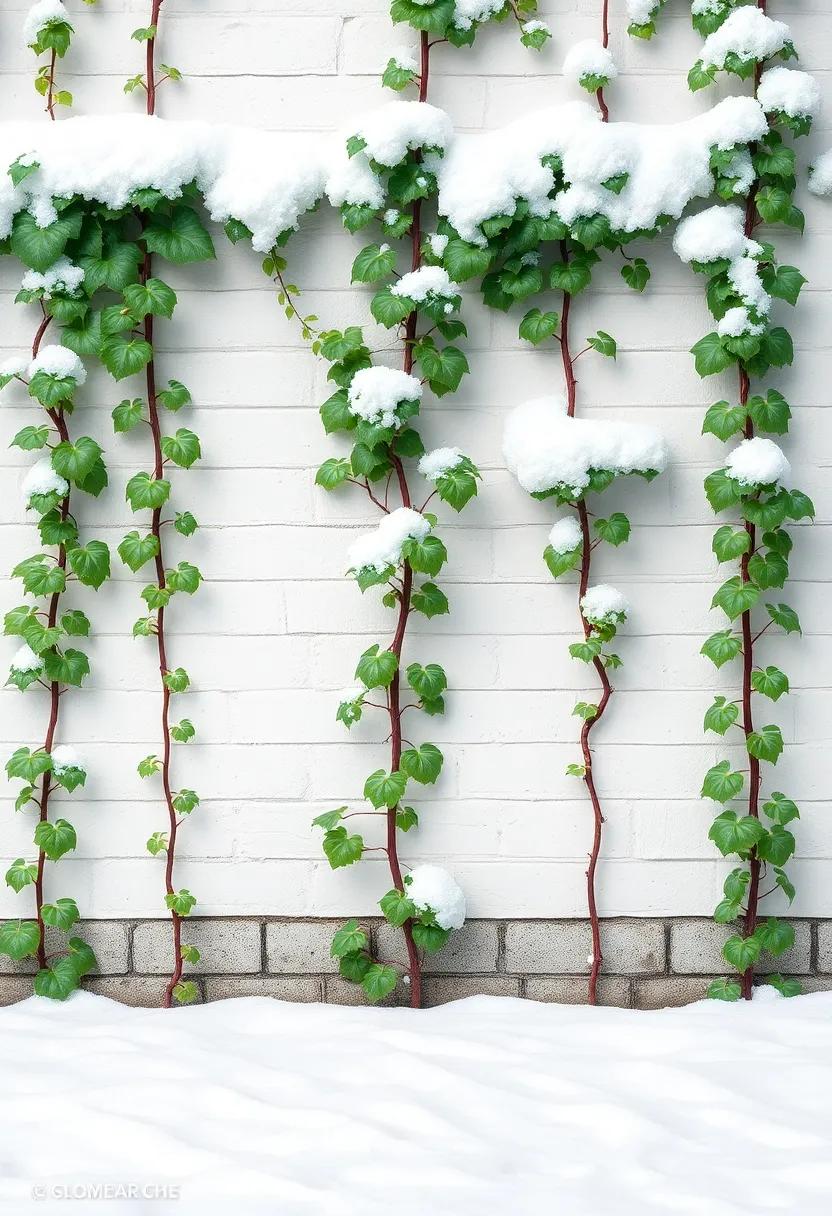
as the temperatures begin to dip and winter approaches, it’s essential to take proactive measures to safeguard your climbing vines from the harsh elements. Mulching is a simple yet effective way to insulate the roots and maintain soil moisture. Spread a thick layer of organic mulch, such as wood chips or straw, around the base of the plants. This not only protects their roots from freezing but also helps suppress weeds that would compete for nutrients. Additionally, consider wrapping delicate vines with burlap to shield them from biting winds and frost, ensuring they remain sturdy against winter’s chill.
Another crucial step in winterizing your climbing vines involves pruning. Trimming back excessive growth not only reduces the weight on the structure but also helps prevent damage during snow and ice accumulation. focus on removing any dead or diseased branches,which can be a breeding ground for pests during the colder months. After pruning, a protective plant cover can be utilized for added insulation, especially for younger or more fragile species. Remember, thorough readiness not only helps your climbing vines survive winter but also primes them for vibrant growth in the spring.
Creative Plant Pairings: Harmonizing Vines with Other Patio Flora
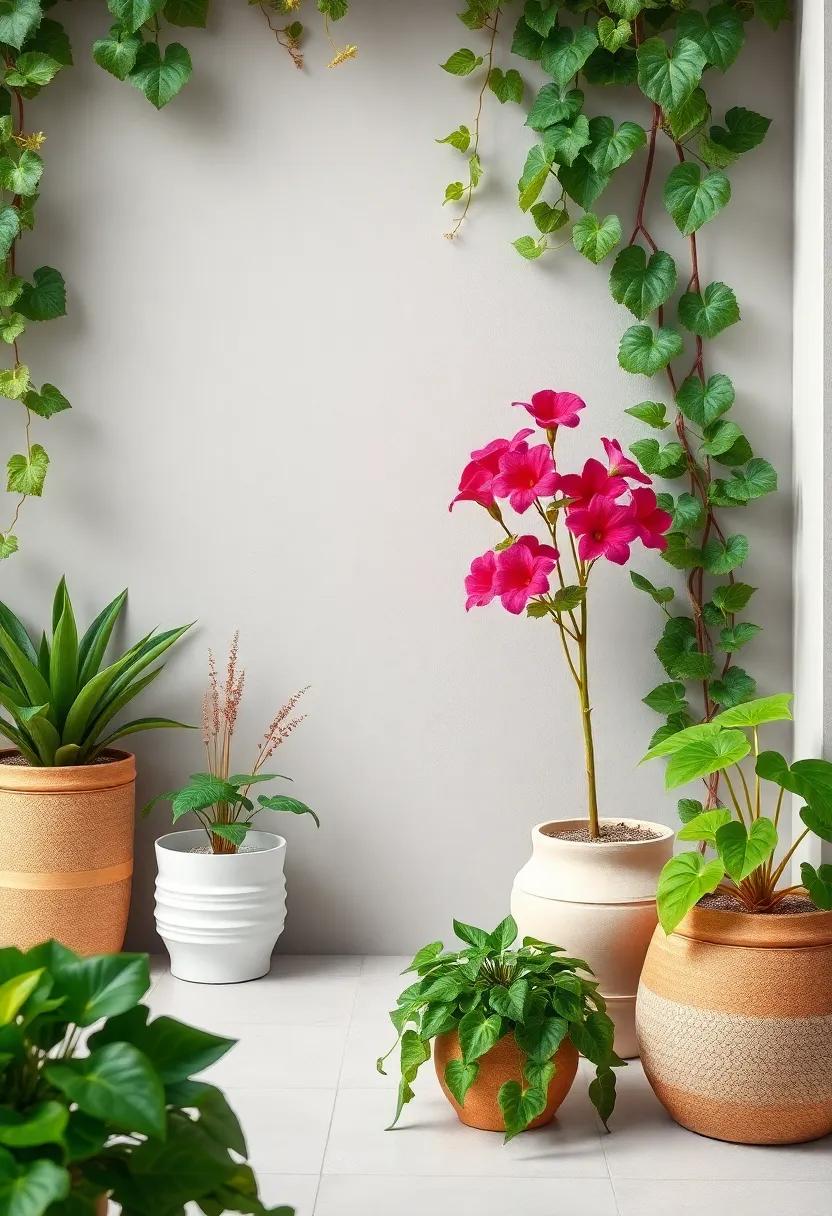
When planning your patio garden, consider pairing climbing vines with complementary flora to create a visual feast that captures the essence of nature. Such as, morning glories, with their vibrant blue and purple hues, thrive beautifully alongside blooming petunias. The trumpet-shaped blossoms of morning glories offer a striking visual contrast against the delicate petals of petunias, while their growth habits play nicely off each other. Cascading ivy is another excellent choice; it can drape gracefully from hanging pots, providing a lush backdrop for bright, sun-loving annuals like zinnias and marigolds.
For more structured combinations, you might opt for a combination of clematis and roses. The deep richness of rose colors can accentuate the varied blooms of clematis,which can climb and wrap itself around trellises,creating a romantic ambiance.As you create your plant combinations, also consider adding herbs such as basil or thyme at the base of your climbing vines. Not only do these herbs add flavor to your culinary dishes, but their aromatic scents can enhance the overall sensory experience of your patio space. Here’s a quick reference table to help inspire your pairings:
| Climbing Vine | Pairing Plant | Highlight |
|---|---|---|
| Morning Glory | Petunia | Vibrant Contrast |
| Cascading Ivy | Zinnia | Colorful Cascades |
| Clematis | Rose | Romantic Ambiance |
| Vintage Wisteria | Lavender | fragrant Bliss |
Vibrant Color schemes: designing with Colorful Climbing Plants

When it comes to transforming your patio into a vibrant sanctuary, colorful climbing plants are an excellent choice. Their ability to grow upwards allows for the optimization of space, creating a lush vertical garden that captivates the eye. Consider incorporating the following plants to achieve a stunning kaleidoscope of colors:
- Clematis: Available in shades of purple, pink, and white, this perennial vine blooms throughout the summer.
- Honeysuckle: Producing fragrant flowers in hues ranging from yellow to red, honeysuckle attracts both hummingbirds and butterflies.
- Ivy: While primarily green, some varieties showcase splashes of gold and white, adding to the overall appeal.
- Passionflower: With its exotic blooms in deep purple and white, this plant is a showstopper for any vertical garden.
To further enhance the visual impact of your climbing plants, consider combining them with complementary elements. Adding decorative trellises painted in bold colors can create a striking contrast, while hanging planters filled with trailing flowers provide depth. Organizing the plants in a way that layers their colors will help achieve a balanced palette. Here’s a simple table that suggests color combinations and the corresponding climbing plants:
| Color Combination | Suggested Climbing Plants |
|---|---|
| Purple & Yellow | Clematis & Honeysuckle |
| Red & White | Passionflower & Ivy |
| Pink & Green | Clematis & Ivy |
The Aromatic Experience: Fragrant Vines to Enhance Your Patio
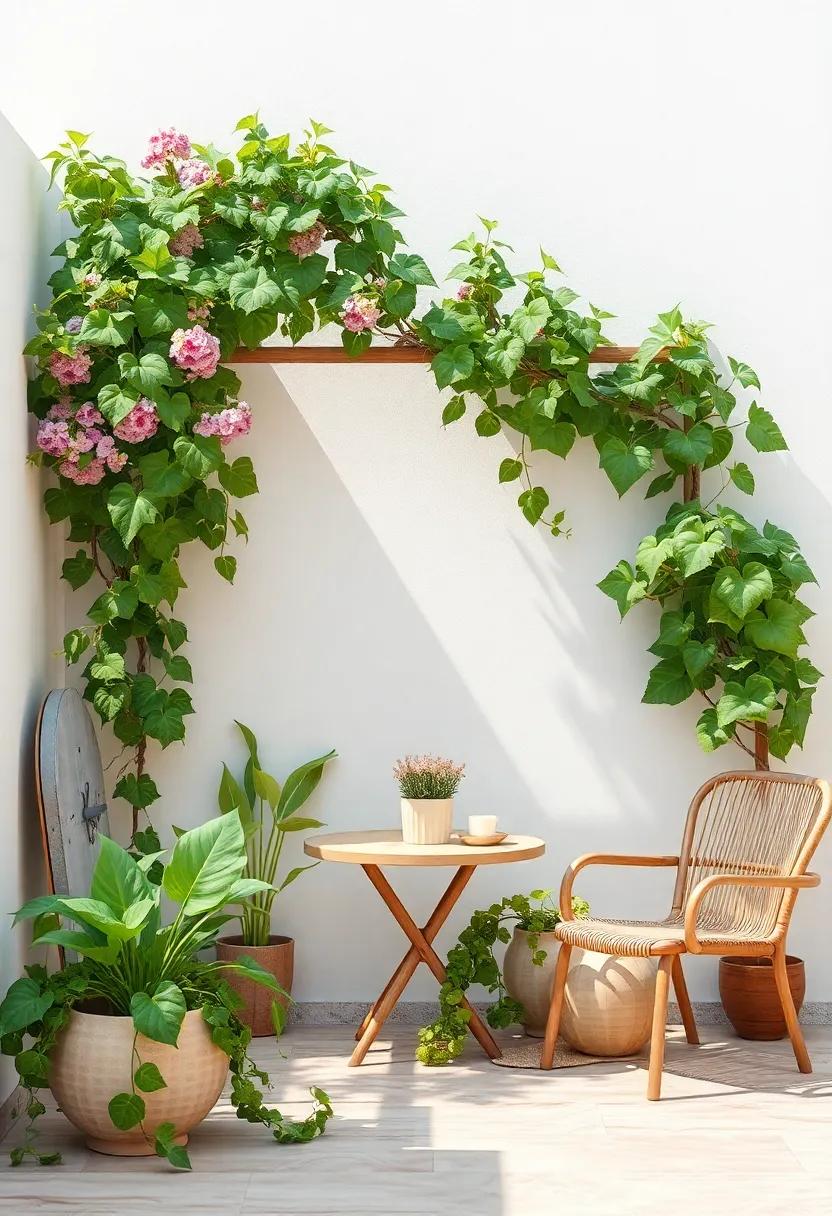
Transform your patio into a sensory sanctuary with the enchanting allure of fragrant climbing vines.Not only do these plants add height and visual interest, but their delightful scents can create an inviting atmosphere perfect for relaxation. Here are a few must-have floral fragrances that can elevate your outdoor space:
- Jasmine: Known for its sweet, intoxicating aroma, jasmine thrives in sunny locations, cascading beautifully along trellises.
- Honeysuckle: Bursting with a honey-like sweetness, honeysuckle vines attract both birds and beneficial insects.
- Sweet Pea: This annual vine offers a vibrant range of colors along with its charming fragrance, making it a favorite for any patio.
- Gardenia: With its creamy white blooms and velvety scent, gardenias can also climb with the right support.
Incorporating these aromatic plants into your patio design not only beautifies your surroundings but also creates an immersive experience that engages your senses.Consider arranging your fragrant vines to create an inviting atmosphere for evening gatherings or secluded reflections. To help you better understand the fragrance intensity of various climbing plants, take a look at this brief comparison:
| Plant Type | Fragrance Intensity | Best Time to Enjoy |
|---|---|---|
| Jasmine | High | Evening |
| Honeysuckle | Moderate | Late Spring |
| Sweet Pea | High | Late Afternoon |
| Gardenia | very High | Night |
Climbing Artistry: using Vines to Create a Living Mural
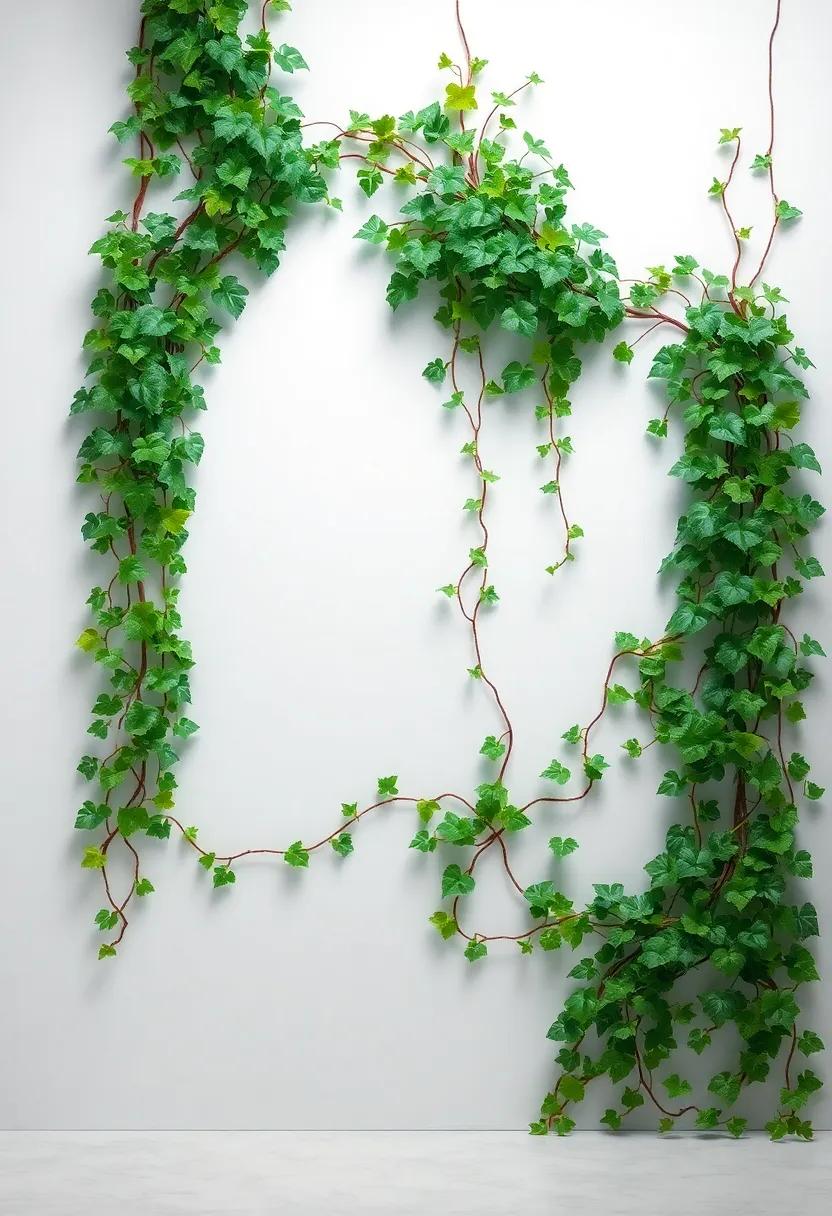
Imagine your patio transformed into a lush canvas of life, where the vibrant greens and cascading blooms of climbing vines breathe character into dull walls. By using a variety of climbing plants, you can create stunning living murals that enhance your outdoor space. Choose vines that thrive in your climate, such as hops, wisteria, or clematis, to create different textures and colors. These plants not only add beauty but also offer a soothing atmosphere with their gentle rustling in the breeze.
To get started, consider the following elements that will help to structure your living mural:
- Support System: Install trellises, arches, or lattice that will serve as a framework for your vines.
- Color Palette: Combine flowering species with foliage to create dynamic contrasts throughout the seasons.
- Layering: Plant taller vines at the back and shorter ones at the front to create depth.
Creating a living mural is not just about aesthetics but also about fostering a habitat for local wildlife. A well-designed climbing vine arrangement can attract birds, butterflies, and beneficial insects, enriching your patio’s ecosystem. To visualize the potential, take a look at the table below, showcasing popular climbing vines and their characteristics:
| Plant | Growth Rate | Flowering Season | Sunlight Needs |
|---|---|---|---|
| Hops | Fast | Summer | Full Sun |
| Clematis | Moderate | Spring to Fall | Partial Sun |
| Wisteria | Fast | Spring | Full Sun |
Exploring Native Vines: Embracing Local Flora for Your Garden

Transforming your patio into a vibrant oasis can be effortlessly achieved by incorporating native climbing vines. These plants not only add vertical interest but also attract local wildlife, creating a harmonious ecosystem right at your doorstep.Consider the following options for your garden:
- Humulus lupulus (Common Hop): Known for its rapid growth and lush foliage, this versatile vine can be trained on trellises or arbors, enhancing your patio’s aesthetic with its green backdrop.
- Vitis riparia (Wild Grape): This hardy climber not only provides shade but also produces delectable grapes, perfect for snacking or making homemade preserves.
- passiflora incarnata (Maypop): With striking flowers and edible fruit, this vine adds both beauty and functionality to your garden, attracting pollinators in the process.
By selecting these local vines, you not only celebrate your region’s natural beauty but also ensure that your garden thrives with minimal maintenance. For an enhanced visual experience, consider trellises made from natural materials to complement the wild allure of these native plants. You may also want to create a distinct arrangement to showcase your climbing friends:
| Vine name | Growing Conditions | Aesthetic Value |
|---|---|---|
| Common Hop | Full sun, moist soil | Lush green foliage, clusters of cones |
| Wild Grape | Partial shade, well-drained soil | Dense leaves, small grape clusters |
| Maypop | Full sun to partial shade | Unique flowers, edible fruits |
Seasonal Highlights: Vines That Change with the Seasons

Climbing vines are a fantastic way to elevate the ambiance of your patio throughout the different seasons. In spring, vibrant blossoms burst forth from plants like Bougainvillea and Clematis, creating a colorful tapestry that breathes life into your outdoor space. By summer, these vines provide a lush canopy, ideal for shade while producing a stunning backdrop for outdoor dining and entertaining. As the temperatures start to cool in autumn, many varieties, including Virginia Creeper and Boston Ivy, showcase a stunning transformation with their leaves turning fiery shades of red, orange, and gold.
In winter, although many vines may appear bare, their striking structure can still enhance your patio’s aesthetic. Consider incorporating evergreen climbing options like Honeysuckle and Jasmine for year-round greenery and aromatic benefits. For a touch of whimsy,you can even cover trellises with fairy lights,creating a magical atmosphere that compliments the simplicity of winter nights. Here’s a quick comparison of seasonal highlights for popular climbing vines:
| Vine type | Spring Highlights | Summer Highlights | Autumn highlights | Winter Highlights |
|---|---|---|---|---|
| Bougainvillea | Vibrant flowers | Lush growth | No significant change | Structural beauty |
| Clematis | Diverse blooms | Thriving foliage | Minimal foliage | Year-round interest |
| Virginia Creeper | Fresh green leaves | Full and healthy | Fiery color change | Bold branching |
| Honeysuckle | Sweet fragrance | Vibrant blooms | little change | Evergreen foliage |
Choosing the Right Support: Trellis and Arch Ideas for Vining Plants
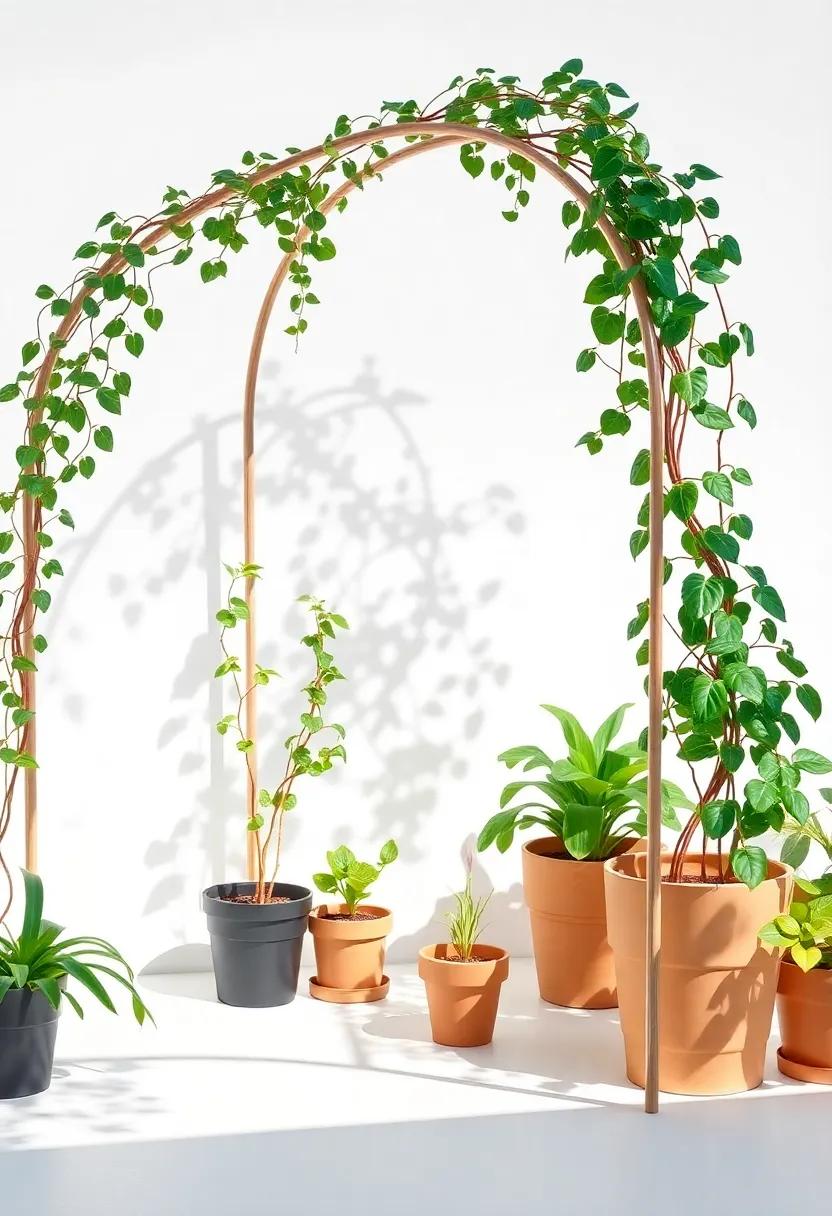
Creating an enchanting vertical garden with climbing vines requires more than just choosing the right plants; you’ll also need the perfect support structures to allow them to thrive and showcase their beauty.Trellises are versatile and can vary in size and material, making them ideal for small patio spaces. Consider options like decorative wooden lattices that add character and can support plants like sweet peas or morning glories. Another stunning alternative is a metal trellis, which can provide a contemporary feel while being sturdy enough for heavier vines like clematis. With both choices, ensure your trellis is anchored well to withstand strong winds and support the steady growth of your plants.
Arches create a dramatic focal point in the garden and can transform your patio into a captivating retreat.Opt for an elegant arching structure, allowing vining plants such as jasmine or Honeysuckle to create a fragrant entrance. Here are some ideas to consider when selecting the perfect arch for your climbing plants:
- Material: Choose between wood for a rustic look or wrought iron for added durability.
- Height: Ensure the arch has sufficient height to accommodate taller spirals of foliage.
- Width: Consider the width of the arch to allow for a lush curtain of flowers.
For a stunning visual experience, pairing vining plants with the right support can result in a breathtaking display. A well-designed combination can elevate your patio aesthetic while maximizing space; hence, take time to refine your choices, creating a charming green oasis right outside your door.
Sustainable Choices: Eco-Friendly Vines for a Greener Patio
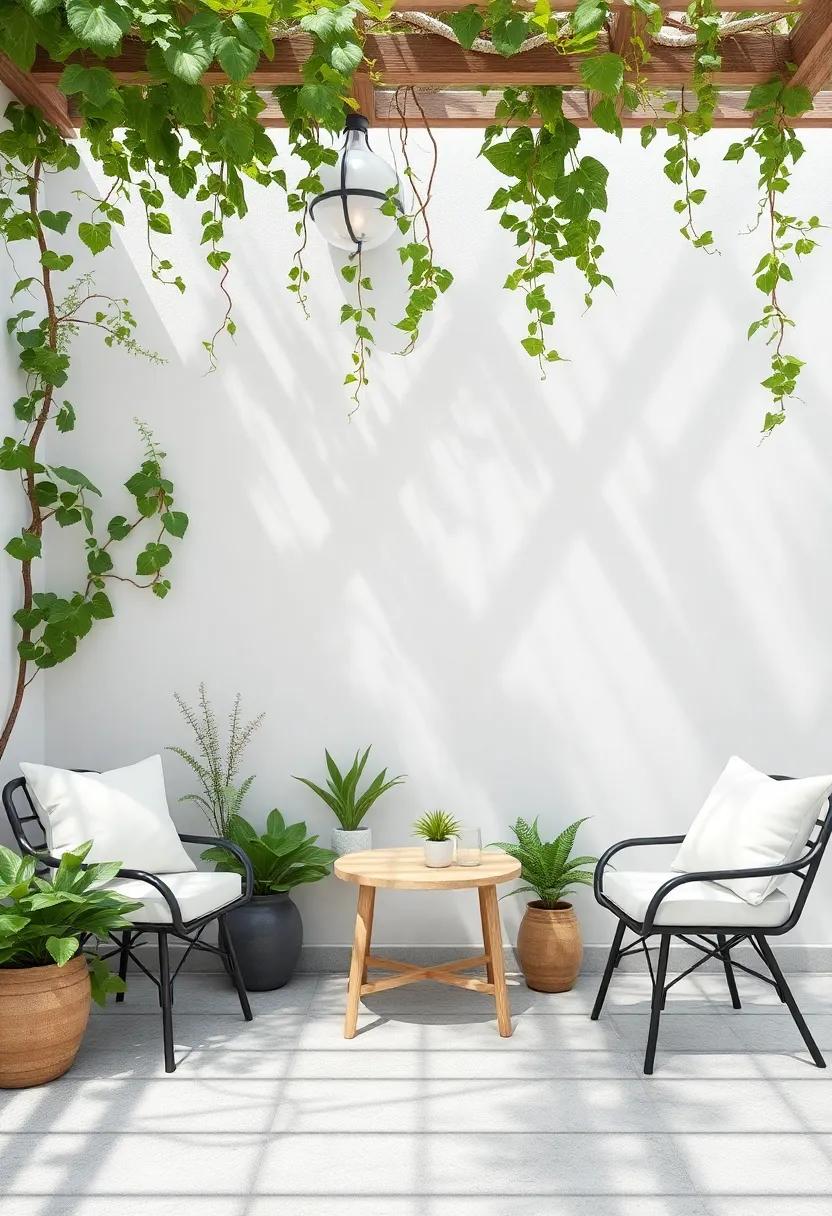
When transforming your patio into a green oasis, consider incorporating eco-friendly climbing vines that not only add beauty but also promote sustainability. Vines like Honeysuckle,Clematis,and Wisteria are perfect for creating a lush vertical garden. These plants not only thrive on minimal care but also attract beneficial pollinators and birds, enhancing the biodiversity of your outdoor space. By choosing native species, you contribute to the local ecosystem, ensuring that your patio supports a wide array of wildlife.
In addition to being environmentally responsible, these climbing vines often require less water once established, making them a practical choice for eco-conscious gardeners. Consider the following benefits of incorporating these green beauties into your patio design:
- Air Purification: Vines like English Ivy actively improve air quality.
- Shade Provision: Create cozy, shaded areas during hot summer days.
- Privacy Enhancement: Use dense vines to create natural screens between spaces.
| Vine Type | sunlight Requirement | Benefits |
|---|---|---|
| Honeysuckle | Full Sun to Partial Shade | Attracts butterflies and hummingbirds |
| Clematis | Full Sun to Partial Shade | Variety of colors, blooms profusely |
| wisteria | Full Sun | Stunning flowers and fragrant aroma |
Container Combinations: Crafting Beautiful Displays with Climbing Plants
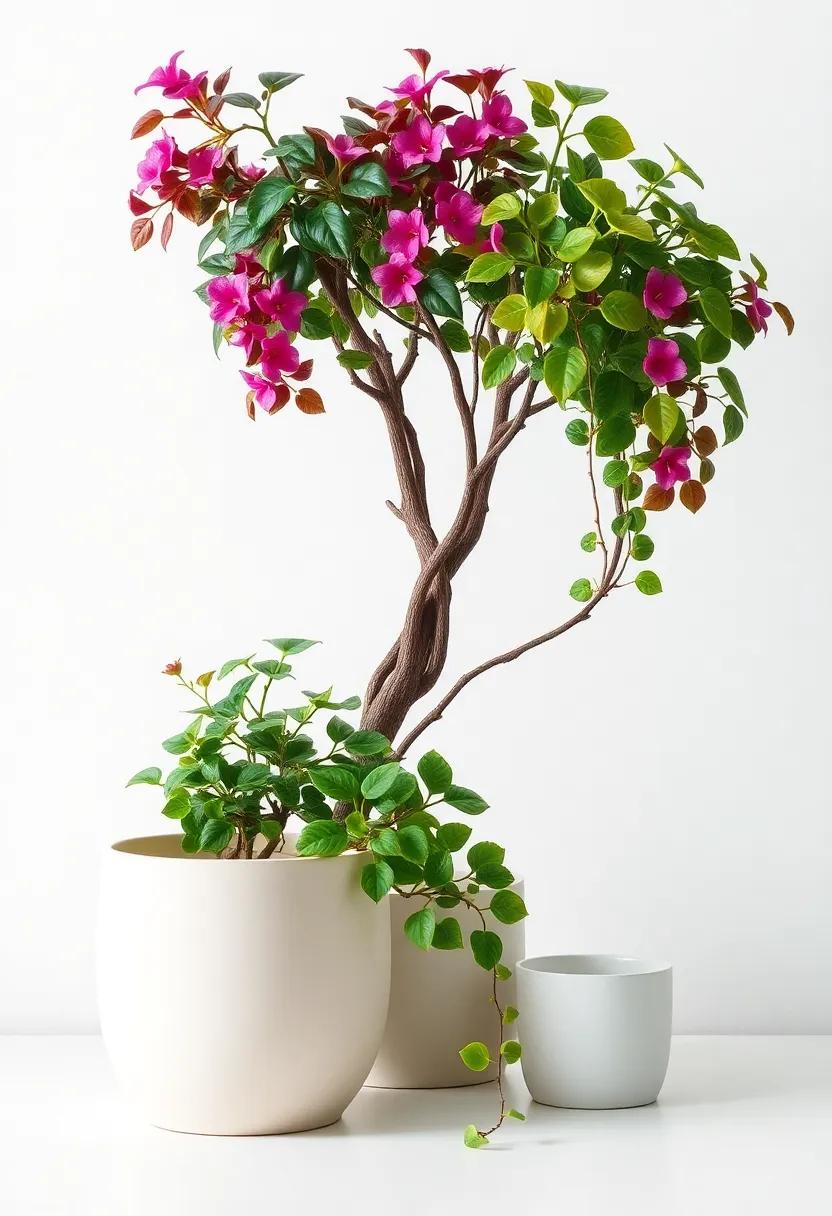
To elevate your patio’s aesthetics, consider using a variety of containers that complement the beauty of climbing plants. Opt for ceramic pots in vibrant colors, or classic terracotta for a rustic flair. Mixing textures adds interest—pair smooth, glossy planters with rough, textured ones. When selecting your climbing vines, think about how they will interact with their surroundings. Some ideal pairing options include:
- Honeysuckle with rustic wooden trellises for a charming woodland vibe
- Sweet Peas in sleek metal cages for a modern aesthetic
- Clematis spilling from decorative woven baskets, creating a lush appearance
Container combinations should not only focus on the visual aspects but also on the growth habits of the plants involved. Tall climbing vines frequently enough demand substantial support and must coexist harmoniously with surrounding foliage. Using a table can help summarize suitable climbing plants alongside their ideal companion plants.
| Climbing Plant | Best Companion |
|---|---|
| Morning Glory | Petunias |
| Wisteria | hostas |
| Black-eyed Susan Vine | Marigolds |
Be mindful of the color schemes when creating displays; consider how the vibrant flowers will contrast with the lush greens of climbing plants. A carefully curated group can transform an ordinary patio into an enchanting retreat, inviting relaxation and admiration. Remember, the interplay between container style, plant selection, and overall arrangement will create a stunning focal point that delights all who see it.
Vertical farming: Utilizing Space with Climbing Vines for Edibles

Vertical farming in smaller spaces opens up a world of possibilities, especially when you integrate climbing vines into your patio garden. these versatile plants not only beautify your surroundings but also maximize the use of vertical space, allowing for a bountiful harvest even in limited areas. With a few trellises and clever planning, you can cultivate edible climbing plants that thrive upwards, creating lush green walls. Some excellent choices for this style include:
- Beans – Quick to grow and productive, these legumes add protein to your diet.
- Cucumbers – Their trailing nature makes them ideal for vertical growing, producing a refreshing snack.
- Tomatoes – Indeterminate varieties can climb high, offering abundant fruits and vibrant colors.
- Peas – sweet and tender, these are perfect for snacking and add nitrogen back to the soil.
- Squash – Choose compact varieties that will thrive vertically, maximizing your space while delivering flavorful results.
To optimize your vertical garden,incorporating appropriate support structures is essential. A well-designed trellis not only encourages plants to grow upwards but also ensures good air circulation and sunlight exposure. Below is a simple guideline for different support options tailored for climbing edibles:
| Support Type | Best For | Notes |
|---|---|---|
| Wooden Trellis | Beans, Peas | Sturdy and customizable, great for all types of climbing plants. |
| Mesh and Wire | Cucumbers, Tomatoes | Allows for versatility and adjustable height options. |
| Arches | Squash | Creates an aesthetic focal point while providing space-saving benefits. |
The Perfect Location: Sunlight and Shade Considerations for Vines

When selecting the ideal position for your patio plants with climbing vines, it’s crucial to consider the balance between sunlight and shade. Vines, with their unique climbing habits, thrive under the right light conditions but may require some protective shelter from harsh sunlight. Morning sun is generally favorable, as it promotes growth without the intense heat that can stress the plants later in the day. Partial shade in the afternoon can also benefit certain varieties, helping to prevent leaf burn and encouraging a lush, healthy appearance. Here are key aspects to factor in:
- Sunlight Requirements: Different vines have varied light preferences.For example, Honeysuckle loves full sun, whereas clematis prefers partial shade.
- protection: Use structures like trellises or pergolas to offer shade during the hottest hours while still allowing light absorption early in the day.
- Microclimates: Identify unique spots around your patio where shade from structures or neighboring plants can create ideal conditions for growth.
To help you visualize the right environment for your climbing vines, consider this simple table outlining popular choices and their sunlight preferences:
| Vine Type | Sunlight Preference | Shade Tolerance |
|---|---|---|
| Honeysuckle | Full sun | Low |
| Clematis | Partial sun | Moderate |
| Wisteria | Full sun | Low |
| Sweet Pea | Full sun | High |
Ultimately, fine-tuning your climbing vines’ location based on these sunlight and shade considerations will not only contribute to a stunning visual display but also promote healthy growth for your patio plants. By observing how light interacts with different areas of your space, you can create a thriving sanctuary that celebrates the natural beauty of climbing greenery.
The Harmony of Texture: Blend Climbing Vines with Other Plant Styles

To create a stunning interplay of nature on your patio, incorporating climbing vines with a variety of other plant styles is essential. The vertical growth of these vines adds a dynamic layer to your outdoor space, providing depth and interest. Consider pairing vines such as clematis, morning glories, or hops with contrasting forms like bushy shrubs or ornamental grasses. This combination not only enhances your patio’s visual appeal but also creates a haven of textures that invite the eye to explore more. The soft, flowing nature of the vines works harmoniously with the structured elements of other plants, resulting in a garden that feels balanced yet lush.
For an effective blend, explore the following plant combinations that elevate your climbing vine aesthetic:
| Climbing Vine | Companion Plant | texture Contrast |
|---|---|---|
| Clematis | boxwood | Soft vs. Dense |
| Sweet Pea | Hostas | Delicate vs. Leafy |
| Wisteria | Lavender | Flowing vs. Compact |
Adding elements such as hanging pots with succulents or decorative rocks can further enrich the visual narrative, creating layers that are engaging from various angles.This thoughtful arrangement encourages movement and invites exploration, making your patio not just a space, but an experience that celebrates the beauty of nature in a truly harmonious way.
In Retrospect
As you venture into the world of patio plants adorned with climbing vines, imagine the transformation of your outdoor space into a lush, green sanctuary. These verdant companions not only elevate the aesthetic appeal of your patio but also invite a symphony of nature’s charm, providing shade and privacy while fostering a vibrant ecosystem. Whether you opt for fragrant jasmine winding elegantly around trellises or the hearty vigor of sweet peas tumbling over arbors, the choices are as diverse as your personal style.
As you cultivate your vine-laden retreat, remember that each plant tells a story, adapting to the sunlight, ambiance, and care you offer. Embrace the art of gardening as a journey that grows alongside you, filling your space with tranquility and beauty. So, gather your pots, trowels, and aspirations, and let your patio flourish with vines that reach for the sky, inviting all who visit to sit back, admire, and connect with the enchanting beauty of nature right at home. Happy planting!
 theFASHIONtamer Where Style Meets Space, Effortlessly
theFASHIONtamer Where Style Meets Space, Effortlessly 